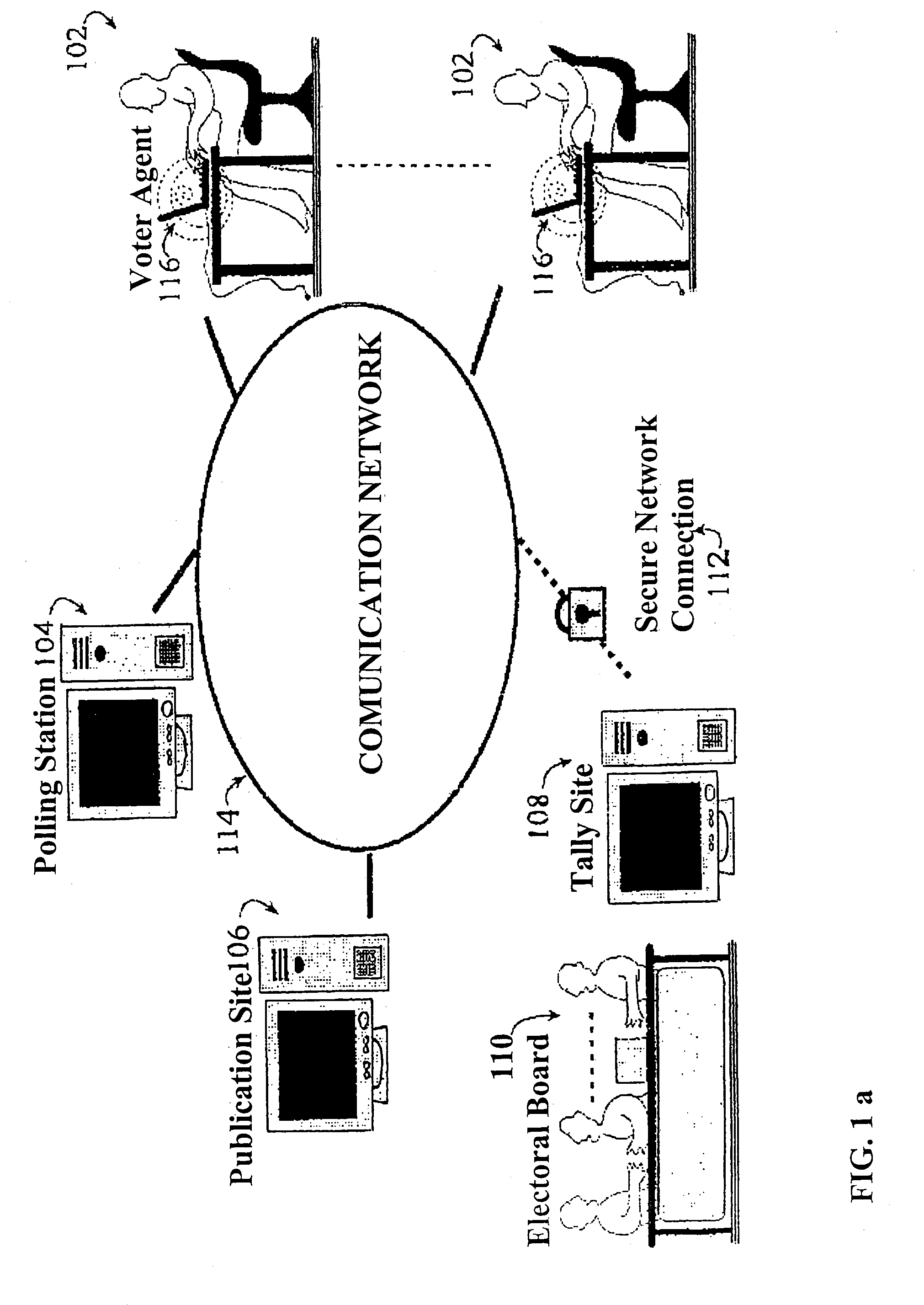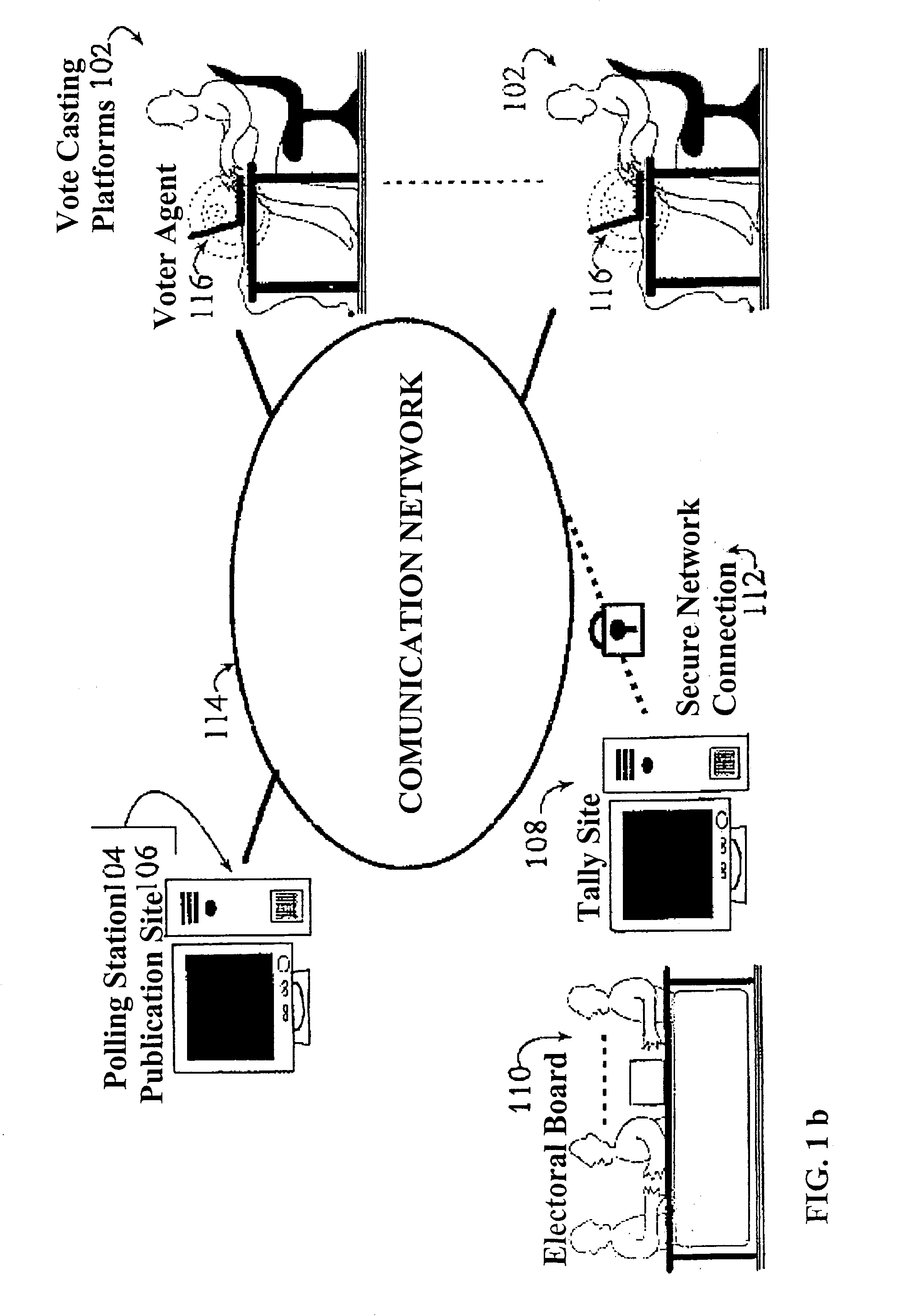Secure remote electronic voting system and cryptographic protocols and computer programs employed
a remote electronic voting and cryptographic protocol technology, applied in the field of secure remote electronic voting system and cryptographic protocol and computer programs employed, can solve the problems of inability to solve specific safety requirements of electoral processes, no longer useful physical protection measures in remote electronic voting systems, and scheme not offering any important benefits, etc., to achieve effective implementation
- Summary
- Abstract
- Description
- Claims
- Application Information
AI Technical Summary
Benefits of technology
Problems solved by technology
Method used
Image
Examples
Embodiment Construction
[0028]This invention refers to a secure electronic voting method and the cryptographic scheme used, specially applicable to remote electronic voting through a communication network. Said cryptographic scheme includes cryptographic protocols and processes which take place before, during and after the voting or poll itself. The scope of the invention does not cover the tasks of constructing the roll and the possible management of asymmetric keys for the voters.
[0029]Creating a roll of voters is in fact a prior step essential for any poll which seeks to meet the minimum safety requirements. Said roll will be useful during the Vote Casting Protocol 206 and / or the Tallying Process 210, essentially for preventing that non allowed users can vote and that authorized voters record more votes, as well as for preventing the introduction of false ballots or the names of voters who abstained from voting.
[0030]Preferably, the voting method will be supported on a public key infrastructure or PKI, ...
PUM
 Login to View More
Login to View More Abstract
Description
Claims
Application Information
 Login to View More
Login to View More - R&D
- Intellectual Property
- Life Sciences
- Materials
- Tech Scout
- Unparalleled Data Quality
- Higher Quality Content
- 60% Fewer Hallucinations
Browse by: Latest US Patents, China's latest patents, Technical Efficacy Thesaurus, Application Domain, Technology Topic, Popular Technical Reports.
© 2025 PatSnap. All rights reserved.Legal|Privacy policy|Modern Slavery Act Transparency Statement|Sitemap|About US| Contact US: help@patsnap.com



